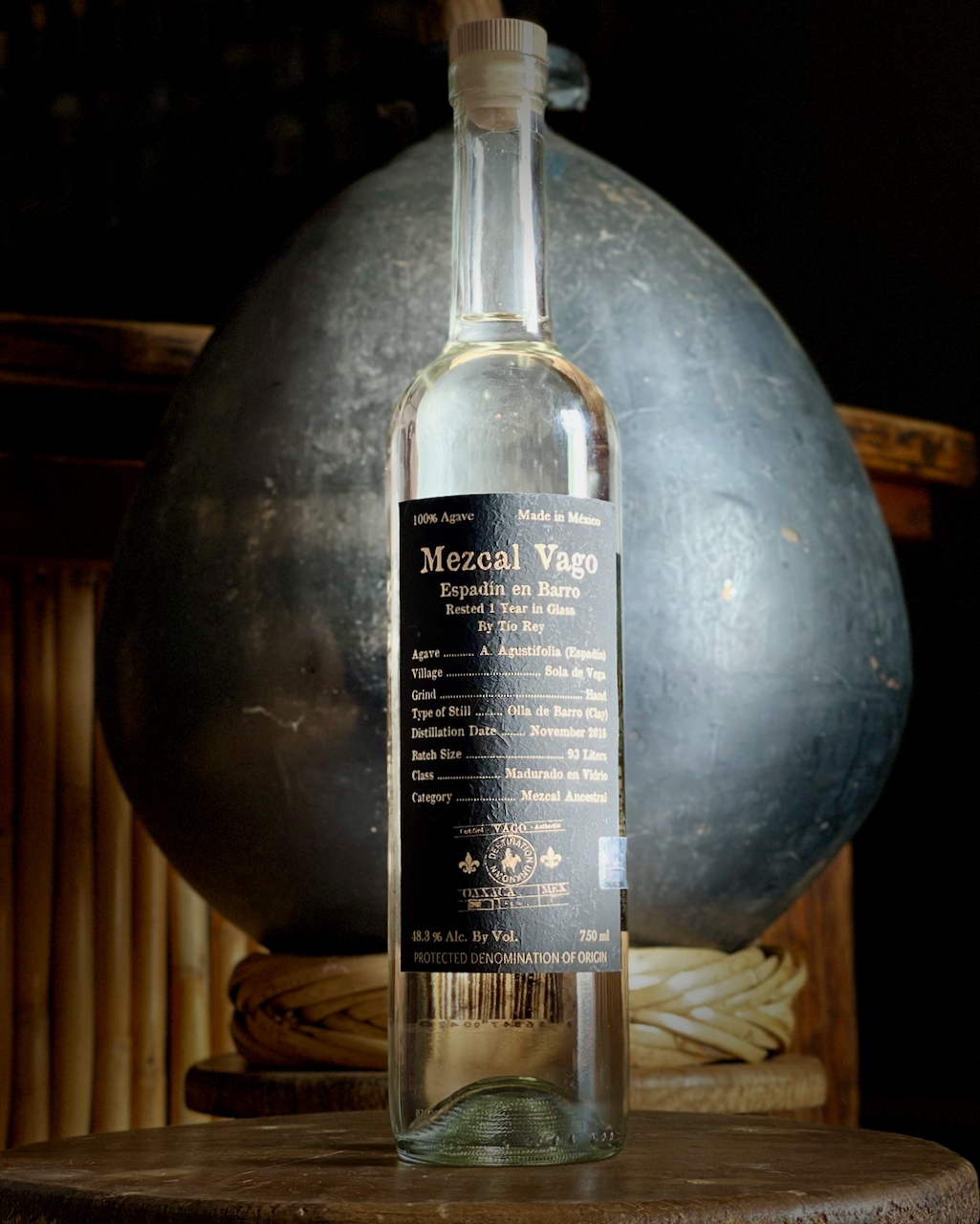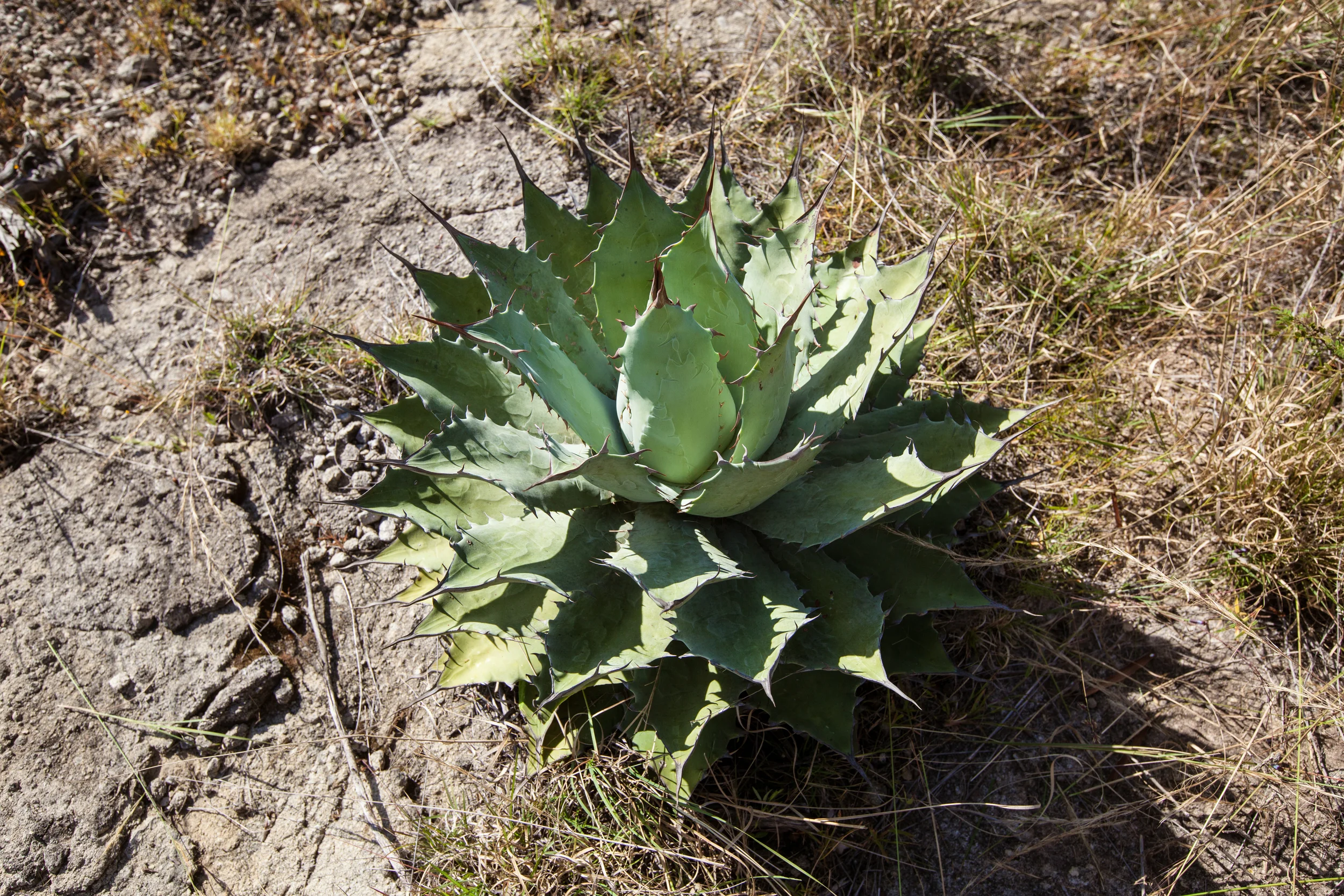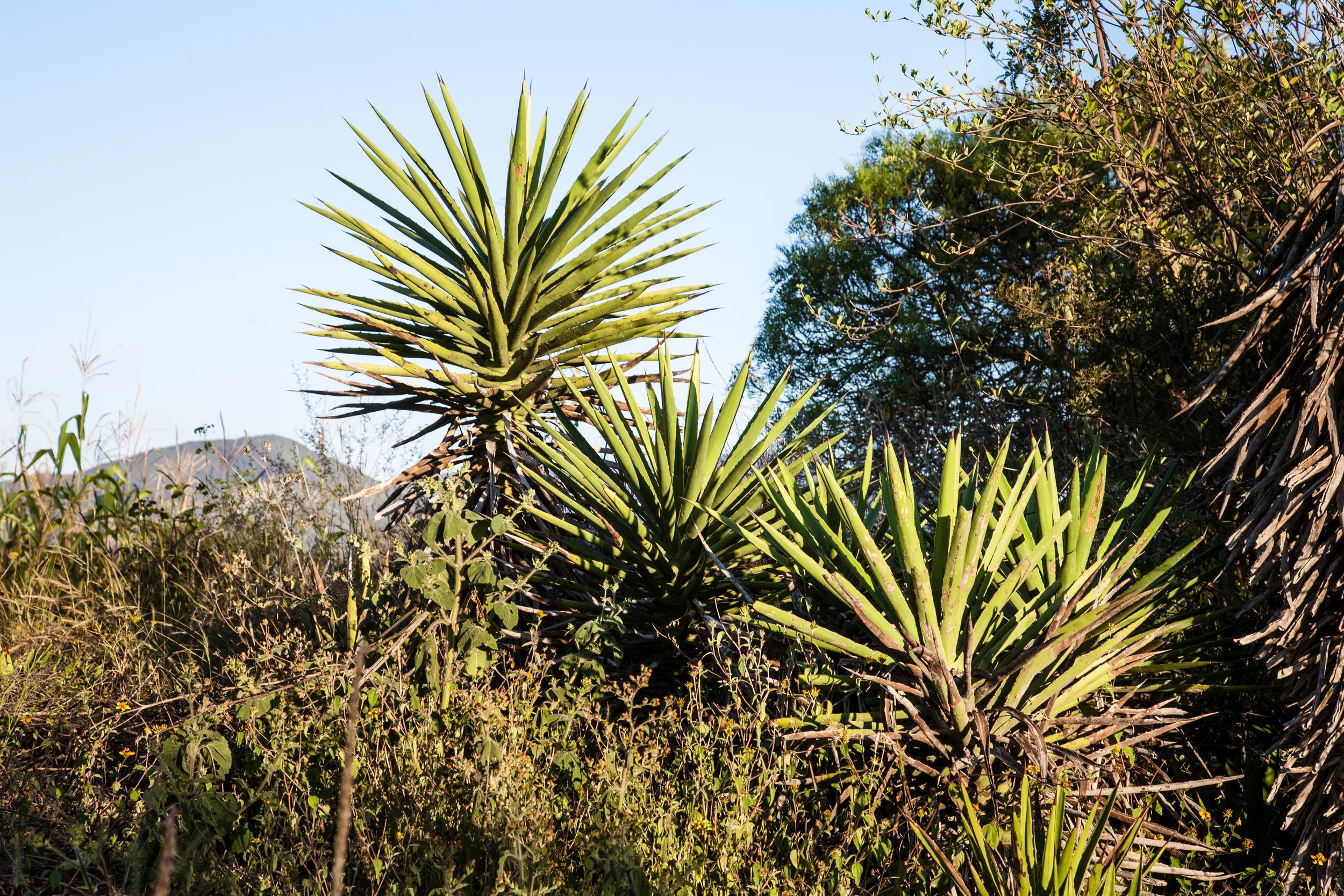This tiny 85 liter batch was made by Aquilino Garcia Lopez in Candelaria Yegolé, Oaxaca (16°29'41.36"N, 96°18'38.69"W). It contains agave Madre Cuixe (60%), Agave Cuixe (30%), and Agave Tobalá (10%).
Madre Cuixe and Cuixe are both varietals of the Agave Karwinskii family. Agave Karwinskii are unusual looking agaves that look more like a Yucca tree than a classic bulbous agave (see fig.1 and 2).
Fig. 1 Agave Madre Cuixe (image: http://losgentiles.com.mx/)

Fig. 2 Agave Cuixe growing wild in Yegolé

Both the Madre Cuixe and Cuixe take 12-15 years to mature. Karwinskiis grow wild in lower, hotter climates locally known as “tierra caliente.” Karwinskiis are not commonly cultivated for mezcal production, yet are often seen planted on property lines. Their tall profiles make a great fence from neighboring properties or a buffer from a road. The piñas used for mezcal production are similar to a tree trunk and are extremely tough (see fig.3). Aquilino roasts these piñas for an additional 24 hours longer than other agaves in order to optimize the unique agave sugars that come from this plant. Ironically, this extremely rugged, wild plant can yield the most elegant mezcals.
Fig. 3 Agave Cuixe piñas

The Agave Tobalá is the most coveted in all agave. It is a small, difficult to cultivate agave, and has very distinct flavor characteristics. There are many references to the prized Tobalá in Oaxacan culture. Its Latin name is Agave Potatorum.
Fig. 4 Agave Tobalá

The Tobala used for this batch was wild harvested by Aquilino’s cousins in their home region of San Pedro Mártir Quiechapa. This area sits at a higher elevation of around 6000ft at the headwaters of Rio Quiechapa? Which eventually leads to Candeleria Yegole.
Like all Mezcal Vago batches, all the agave types are cooked, crushed, fermented, and distilled together. Percentages of agave types on the label are dry weight of the piñas before they are roasted underground.
Tobala and Cuixes rarely thrive in the same region, yet all the agave used for this batch was harvested by the same family along the same river corridor. To use Tobalá to round out a mezcal dominated by a different agave is unusual.
The results are exquisite. The vegetal tones of the Madre Cuixe dominate the front palate, the body and mouth feel resemble mezcals made from 100% Cuixe, and the long butterscotch, papaya finish can be attributed to the Tobalá.
The entire Mezcal Vago Madre Cuixe batch was sold to The Henry Wine Group in California in July Of 2014. Most of the bottles eventually went to on premise accounts throughout California who have shown their love for Mezcal Vago products. If you want to try this unique mezcal, you will have to go find it!
Producer: Aquilino García López.

Location: Candelaria Yegolé, Oaxaca

The still (palenque) is on Aquilino’s ranch where he lives full time. He and his father moved it to its current location 15 years ago. It has moved around from nearby locations over the years. He believes his family has been making Mezcal for at least five generations. Aquilino and his son Mateo do nearly all of the work themselves.
The fermentation vats are made of pine and hold up to 1000 liters. The cooked agave and water ferment from the natural airborne yeasts in the air. No additional ingredients are used to make the Mezcal other than agave and water.
Each batch ferments for around a week. This varies depending on the ambient temperature at the time of fermentation. Aquilino distills his fermented mash before all of the sugar has fermented. This is sooner than other Mescalero’s’ techniques. He uses six fermentation vats. Aquilino has an alembic copper still that has a 250-liter capacity. He makes all the separations (cuts) by smell and taste. All of Aquilino’s mezcals are twice distilled. Aquilino’s Mezcals have a definite style. Bright, clean and bold without too much smoke. They have less bottom end (tails) than other mezcal lines, due in part to his “narrow” cuts on the still. This really lets the subtle notes of the agave shine through on the front end of the palate. All of Aquilino’s mezcal goes through a simple sediment filtration through a tubular cellulose filter before bottling. The bottling is done by hand in Oaxaca City. The very light filtration is the only way the mezcal is affected between when it was made on the palenque and how it ends up in the bottle.





